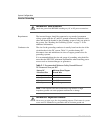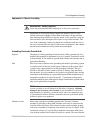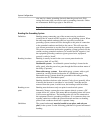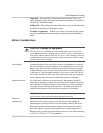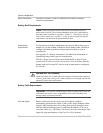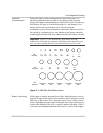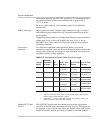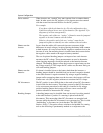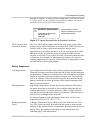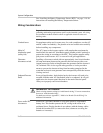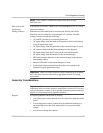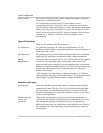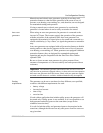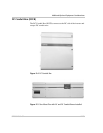
System Configuration
2–16 976-0043-01-02
Series stacked When inverters are “stacked” they must operate from a common battery
bank. In other words, the DC negative of one inverter must be common
with the second inverter and likewise for the DC positive.
For example:
If you have eight 6-volt batteries in a 24-volt configuration, they
would be arranged in two rows of four batteries (see Appendix C for
diagrams of various arrangements).
The negative ends of the two “strings” of batteries must be jumpered
together to become common with each other.
Likewise, the positive ends of the two “strings” must also be
jumpered together so that they are also common with each other.
Shunts near the
inverter
Losses from the cables will cause each inverter to measure slight
differences in actual voltages, in spite of having the battery bank common
to both inverters. It is easy to have the DC negatives common closer to the
inverters if an in-line metering shunt is installed near the inverters before
the negative cables attach to the negative battery terminal.
Jumpers The use of optional bonding jumpers can improve how each inverter
measures the DC voltage. These measurements are used to determine
when charging amperages should be reduced as the batteries become
charged. The bonding jumpers allow the inverters to agree better on what
the voltage actually is. The longer the DC cables are, the more likely you
will need bonding jumpers.
Shunts near the
batteries
If a shunt is installed closer to the battery bank than the inverters, a
bonding jumper should be installed from one inverter’s negative terminal
to the other inverter’s negative terminal. By using a negative bonding
jumper and/or a metering shunt near the inverters, the inverters will have
a better zero volt (DC negative) reference to measure the DC voltage.
DC disconnects The DC positive is more difficult due to the need to have DC disconnects
in each cable for the inverters. The primary reason for the DC disconnects
is for overcurrent protection for the cable it is installed in. By using a
positive bonding jumper the inverters will have a more accurate DC
positive reference to measure the DC voltage.
Bonding Jumpers A bonding jumper may be installed from one inverter’s positive terminal
to the other inverter’s positive if a warning is placed near the DC
disconnects. This means that either DC disconnect can energize both
inverters while the other DC disconnect is not yet turned on. This is called
“backfeeding” a disconnect or circuit breaker. The 2002 NEC,
Section 404.6, C, Exception, allows switches to be backfed if a warning
such as the following is permanently marked on or adjacent to the



